
How to Use DC-DC Step up booster converter 5A: Examples, Pinouts, and Specs
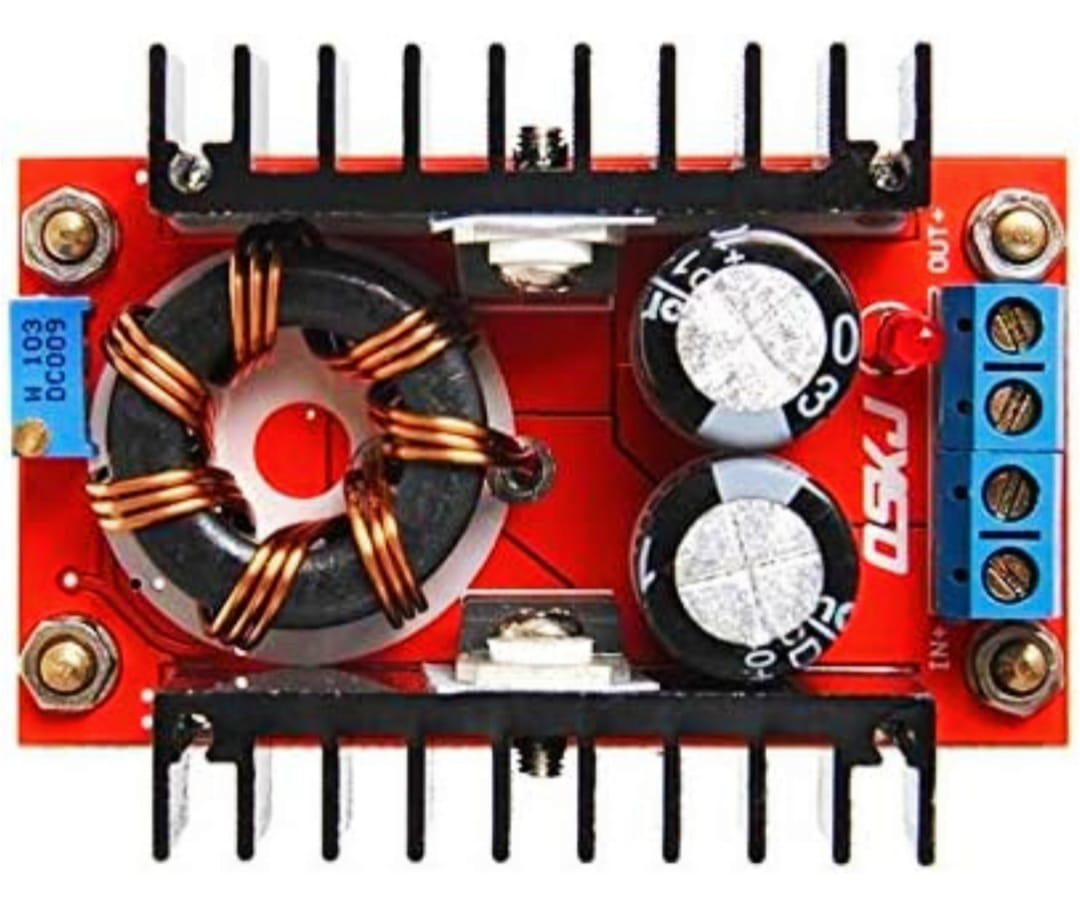
 Design with DC-DC Step up booster converter 5A in Cirkit Designer
Design with DC-DC Step up booster converter 5A in Cirkit DesignerIntroduction
The TNK DC-DC Step Up Booster Converter 5A is a versatile electronic component designed to increase a lower DC voltage to a higher DC voltage. This component is capable of handling up to 5 amps of current, making it suitable for a wide range of applications. Common use cases include powering devices that require a higher voltage than what is available from the power source, such as battery-powered projects, portable electronics, and renewable energy systems.
Explore Projects Built with DC-DC Step up booster converter 5A
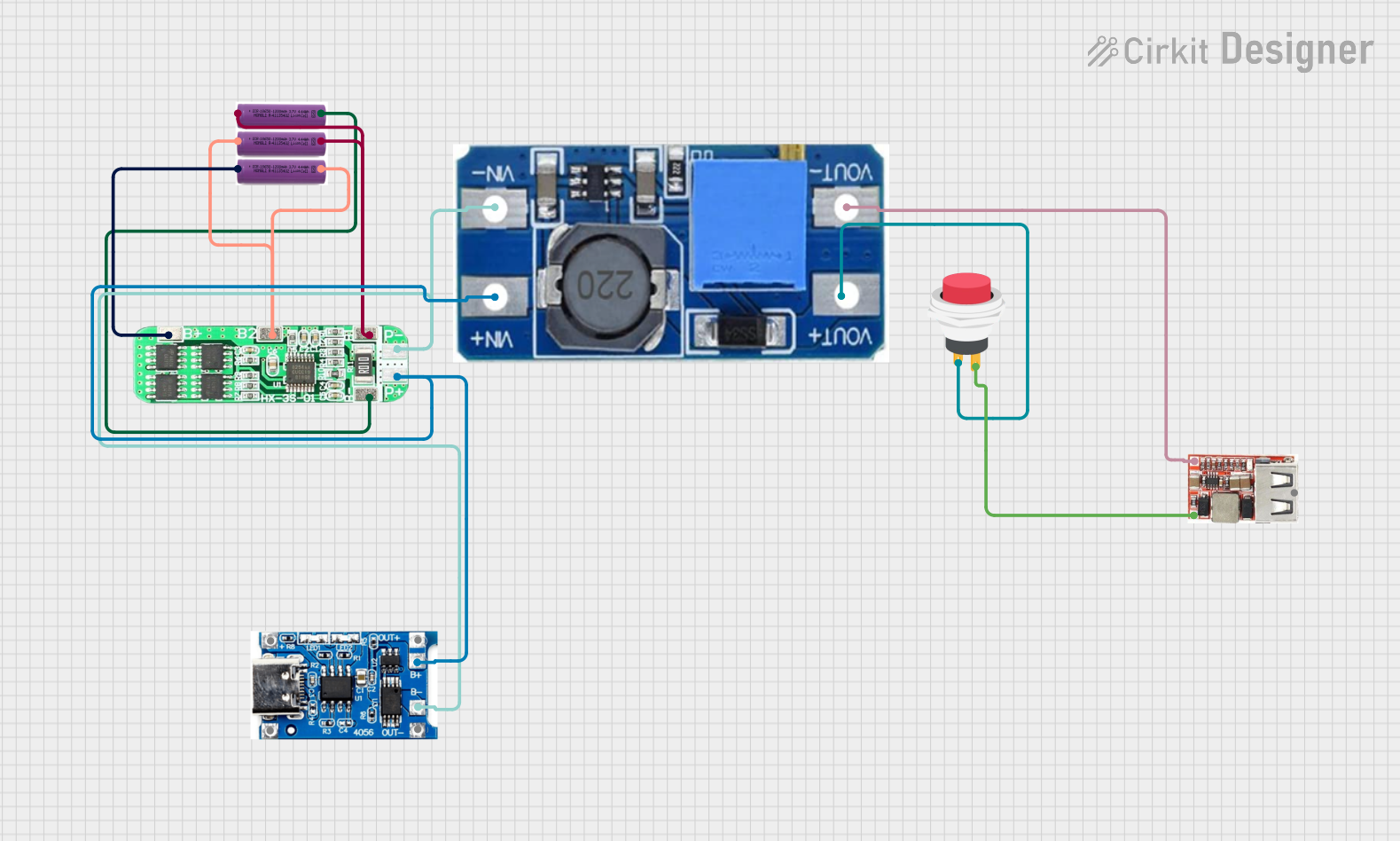
 Open Project in Cirkit Designer
Open Project in Cirkit Designer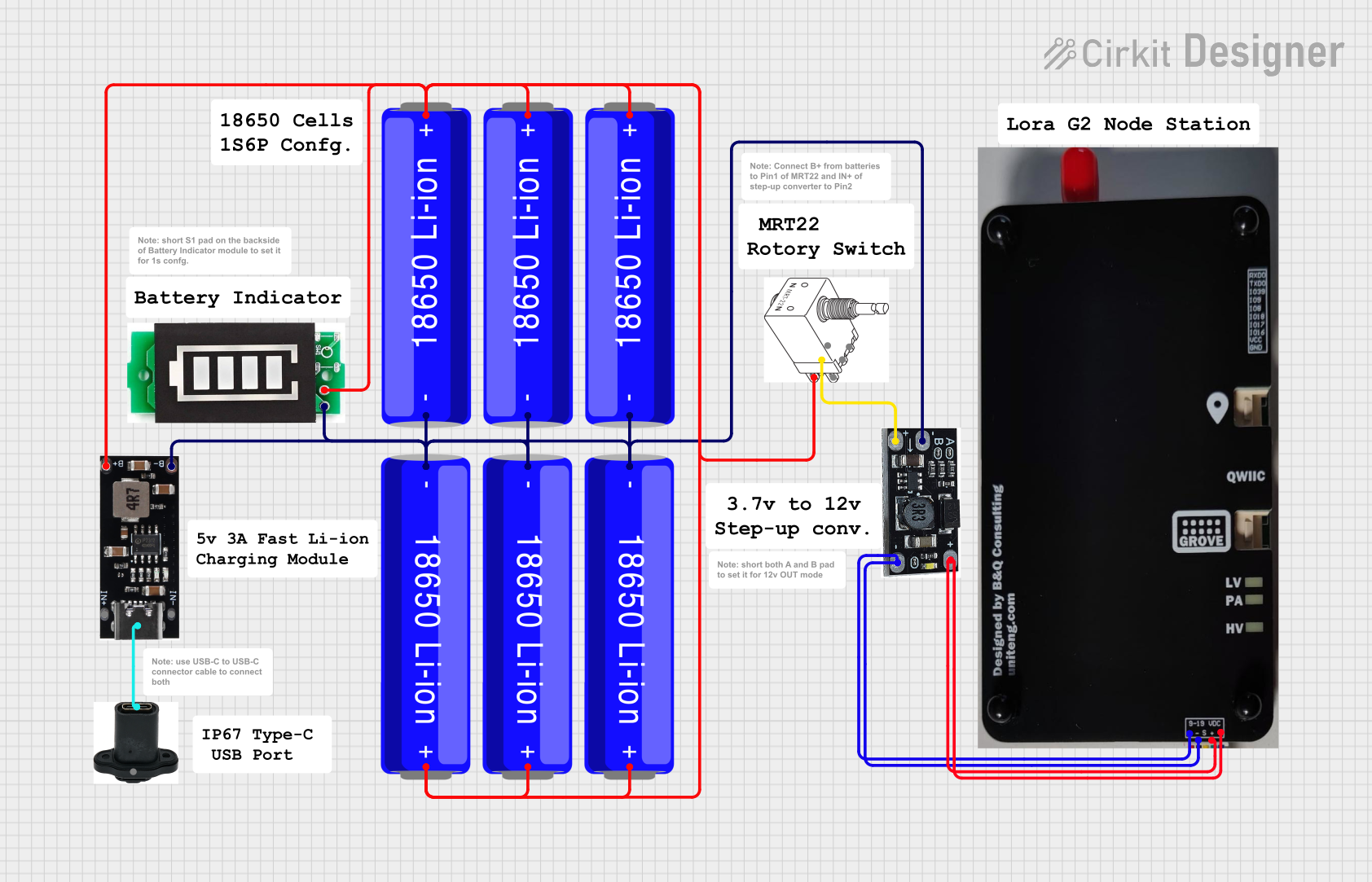
 Open Project in Cirkit Designer
Open Project in Cirkit Designer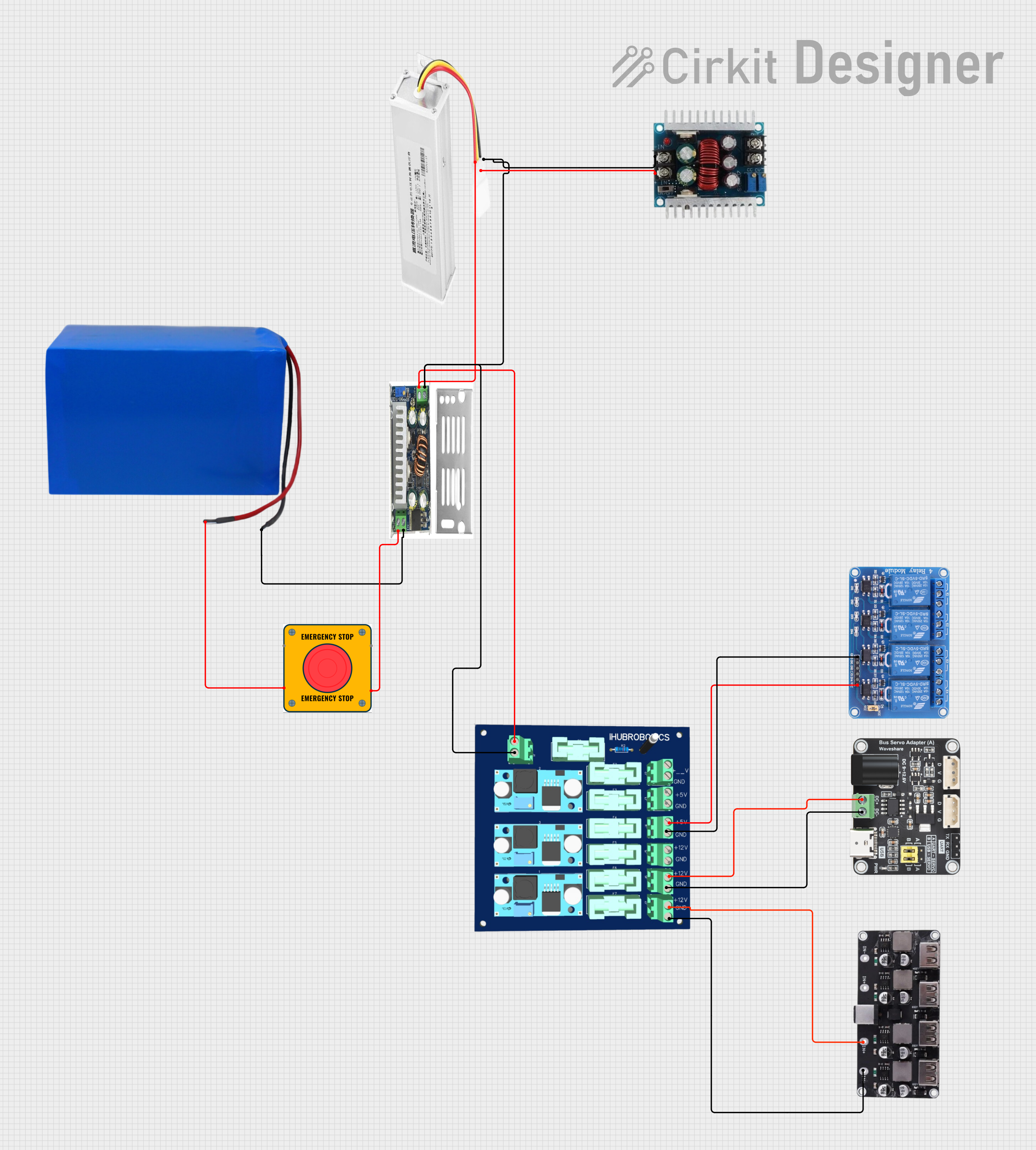
 Open Project in Cirkit Designer
Open Project in Cirkit Designer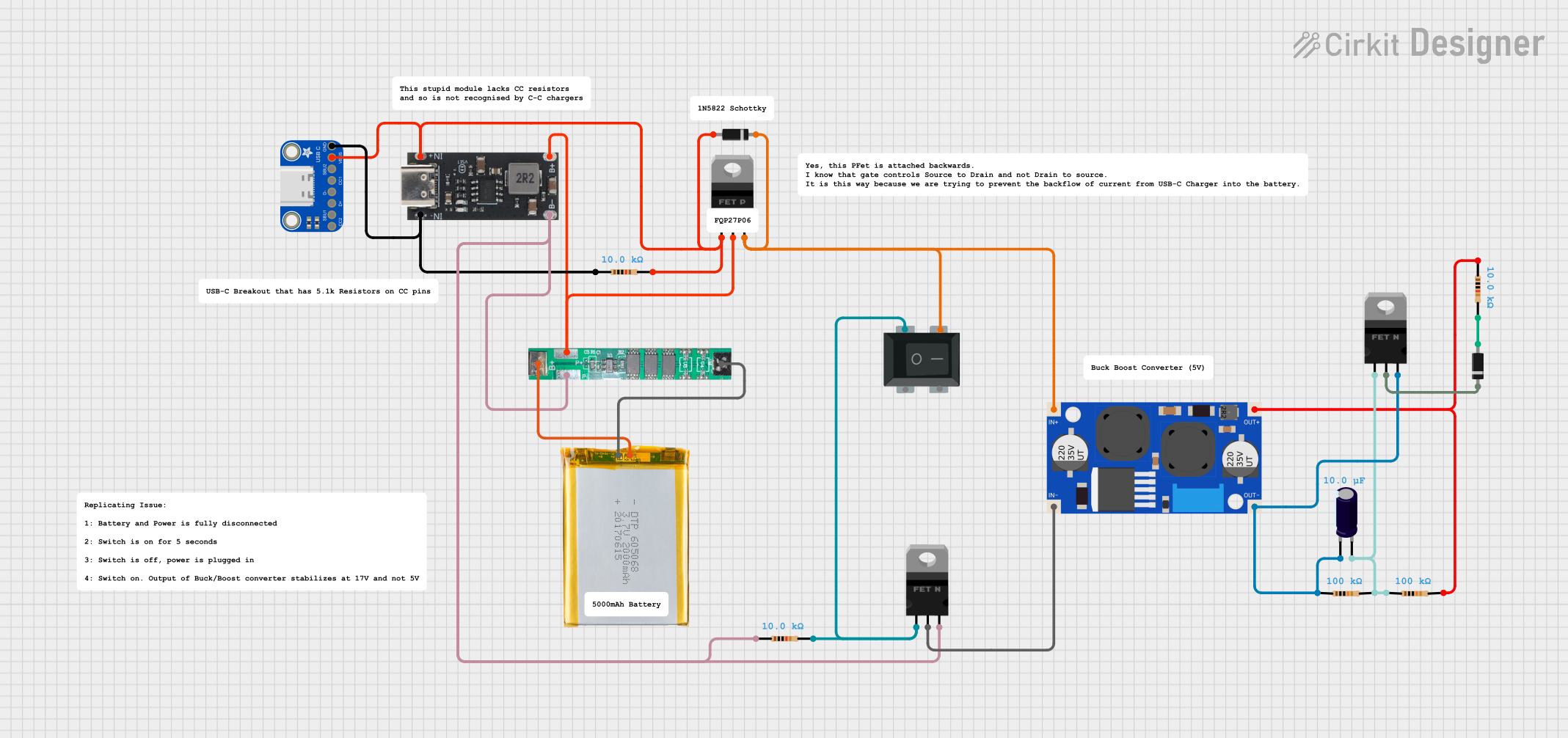
 Open Project in Cirkit Designer
Open Project in Cirkit DesignerExplore Projects Built with DC-DC Step up booster converter 5A

 Open Project in Cirkit Designer
Open Project in Cirkit Designer
 Open Project in Cirkit Designer
Open Project in Cirkit Designer
 Open Project in Cirkit Designer
Open Project in Cirkit Designer
 Open Project in Cirkit Designer
Open Project in Cirkit DesignerTechnical Specifications
Key Technical Details
| Parameter | Value |
|---|---|
| Input Voltage | 3V to 32V |
| Output Voltage | 5V to 35V |
| Maximum Current | 5A |
| Efficiency | Up to 96% |
| Switching Frequency | 150 kHz |
| Operating Temperature | -40°C to +85°C |
| Dimensions | 60mm x 21mm x 14mm |
Pin Configuration and Descriptions
| Pin Number | Pin Name | Description |
|---|---|---|
| 1 | VIN+ | Positive input voltage |
| 2 | VIN- | Negative input voltage (Ground) |
| 3 | VOUT+ | Positive output voltage |
| 4 | VOUT- | Negative output voltage (Ground) |
| 5 | ADJ | Voltage adjustment (via potentiometer) |
Usage Instructions
How to Use the Component in a Circuit
Connect the Input Voltage:
- Connect the positive terminal of your power source to the
VIN+pin. - Connect the negative terminal of your power source to the
VIN-pin.
- Connect the positive terminal of your power source to the
Connect the Output Voltage:
- Connect the positive terminal of the load to the
VOUT+pin. - Connect the negative terminal of the load to the
VOUT-pin.
- Connect the positive terminal of the load to the
Adjust the Output Voltage:
- Use the onboard potentiometer to adjust the output voltage to the desired level. Turn the potentiometer clockwise to increase the voltage and counterclockwise to decrease it.
Important Considerations and Best Practices
- Heat Dissipation: Ensure adequate cooling for the converter, especially when operating at high currents. Use heat sinks or active cooling if necessary.
- Input Voltage Range: Do not exceed the specified input voltage range (3V to 32V) to avoid damaging the component.
- Output Voltage Range: Ensure the output voltage is within the specified range (5V to 35V) and does not exceed the voltage rating of the connected load.
- Current Limiting: Be mindful of the maximum current rating (5A). Exceeding this limit can cause overheating and potential damage to the converter.
Example Code for Arduino UNO
Below is an example code to monitor the output voltage of the TNK DC-DC Step Up Booster Converter using an Arduino UNO. This code assumes you have connected the output voltage to an analog input pin on the Arduino.
// Define the analog input pin
const int analogPin = A0;
// Define the reference voltage (5V for Arduino UNO)
const float referenceVoltage = 5.0;
// Define the voltage divider ratio (if used)
const float voltageDividerRatio = 1.0;
void setup() {
// Initialize serial communication at 9600 baud rate
Serial.begin(9600);
}
void loop() {
// Read the analog input value
int analogValue = analogRead(analogPin);
// Convert the analog value to voltage
float outputVoltage = (analogValue / 1023.0) * referenceVoltage * voltageDividerRatio;
// Print the output voltage to the serial monitor
Serial.print("Output Voltage: ");
Serial.print(outputVoltage);
Serial.println(" V");
// Wait for 1 second before the next reading
delay(1000);
}
Troubleshooting and FAQs
Common Issues Users Might Face
No Output Voltage:
- Solution: Check the input connections and ensure the input voltage is within the specified range. Verify that the load is properly connected.
Overheating:
- Solution: Ensure adequate cooling and ventilation. Use heat sinks or active cooling if necessary. Check for excessive current draw and reduce the load if needed.
Unstable Output Voltage:
- Solution: Verify the input voltage is stable and within the specified range. Check for loose connections and ensure the potentiometer is properly adjusted.
FAQs
Q1: Can I use this converter to charge a battery?
- A1: Yes, but ensure the output voltage is set to the appropriate charging voltage for the battery type. Use a current-limiting circuit to prevent overcharging.
Q2: What happens if I exceed the maximum current rating?
- A2: Exceeding the maximum current rating (5A) can cause the converter to overheat and potentially fail. Always ensure the load current is within the specified limit.
Q3: Can I use this converter with an AC power source?
- A3: No, this converter is designed for DC input only. Using an AC power source can damage the component.
By following this documentation, users can effectively utilize the TNK DC-DC Step Up Booster Converter 5A in their projects, ensuring reliable and efficient voltage conversion.